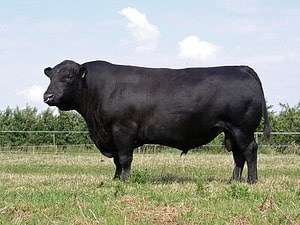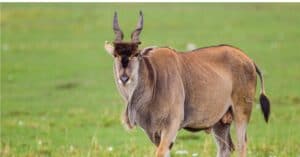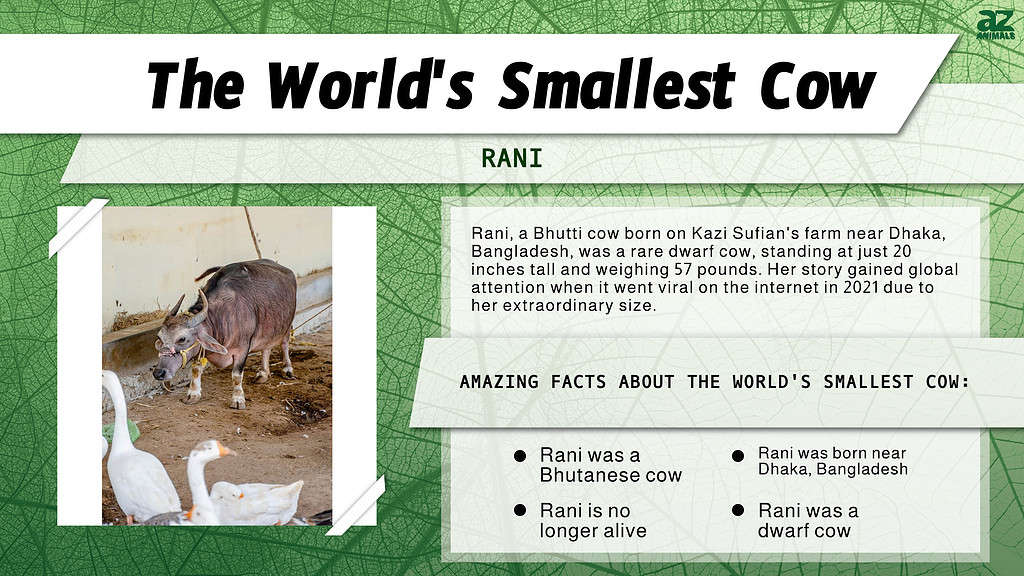
Cows are some of the most useful animals to human beings. In developing countries, a cow can provide a family with milk and pull a plow or wagon. Villagers can use its dried dung for fire or as a building material.
Cows provide meat for food and leather for shoes, clothing, or other practical articles. Their hides can be used as blankets or rugs. They’re so valuable that in some countries, people traditionally exchange them as part of wedding contracts to compensate the family of bride for her lost labor when she moves to her husband’s family.
Yet, at an average weight of anywhere from 800 to 4,000 pounds, cows can be expensive to feed and maintain. That’s why in the Himalayas and other parts of the Indian subcontinent where grazing land can be scarce, dwarf cows have been developed that take far fewer resources. And one of these, a Bhutanese cow named “Rani,” was the world’s smallest cow, measuring just 20 inches tall and weighing only 57 pounds.
Rani’s Story
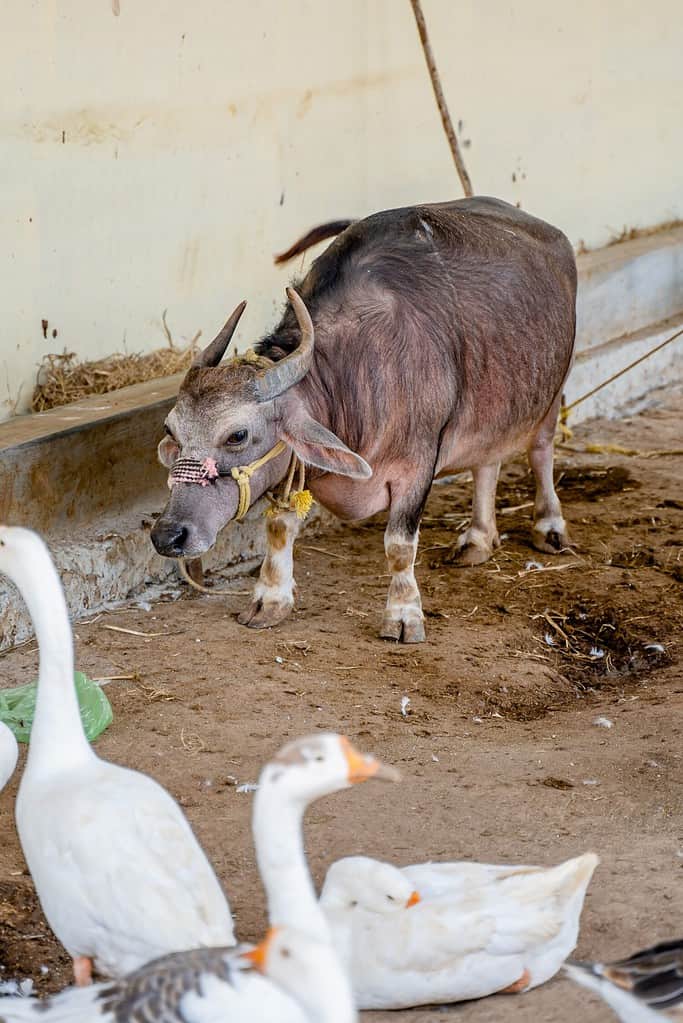
Rani was a dwarf cow similar to this one, standing just 20 inches tall and weighing only 57 pounds.
©HamzaSM/Shutterstock.com
Rani was born near Dhaka, Bangladesh on a farm owned by Kazi Sufian. She was a Bhutti, or Bhutanese cow. These have been specially bred to be compact in size while still giving a lot of milk, but Bhuttis are also particularly valued for their meat.
As she grew and Sufian realized she was four times smaller than the other cows, he knew she was a rarity. Standing at 20 inches and weighing 57 pounds, she was an actual dwarf cow in an already small species. Everyone in the area found out about her, and soon, the whole world knew as her story went viral on the Internet in 2021.
Dwarfism in cows is the result of a genetic mutation that can also be accompanied by other genetic problems. Health issues are not uncommon in such cases, especially issues with the heart. These kinds of mutations sometimes occur with inbreeding and result in animals that do not live very long.
This proved to be true, sadly, in Rani’s case, as she lived to be only two years old. Her life was short, but one of love, care, and international admiration.
What Are the Smallest Cow Breeds in the World?
Although Rani is no longer with us, there is always the chance another adorable dwarf cow will be born. If so, it’s possible it would be one of the following breeds, which are among the very smallest in the world:
Vechur
The Guinness Book of Records has recognized the Vechur cow as the smallest breed of cattle in the world. They get their name from the village of Vechoor in Kerela, South India. Standing on average only 34 inches tall, they produce the largest amount of milk of any breed of cow relative to the amount of food they need. They were popular in Kerala until the 1960s when indigenous cattle began to be crossbred with other varieties. Today they have nearly gone extinct, with only about 200 left in the world.

The tiny gentle Vechur cows are considered by the Guinness Book of World Records to be the world’s smallest cow breed.
©Asok Mathew/Shutterstock.com
Punganur
This type of cow is named for the city of Punganur in Southern India, where it was developed. These dwarf cows are white and light grey and have short horns. They have humped backs sloping down from their shoulders to their hindquarters, and their tails touch the ground.
On average, they grow to be 27-35 inches tall and 253-440 pounds. Daily, they yield about a gallon of milk and require only 11 pounds of feed. They are also able to survive drought conditions very well. Their milk has a higher-than-average fat content. Like the Vechur cow, this breed is close to extinction. Increased interest in keeping them as pets might save them.
Dexter
The Dexter is an Irish cow breed. Owners use them for both beef and milk purposes. An adult dexter will weigh 600-700 pounds making it one of the smaller breeds of cow. The breed does carry a dwarfism gene, which results in cows that are 6-7 inches shorter than the rest of their herd. One of the weaknesses of this breed is that they can suffer from pulmonary hypoplasia, a disorder that causes incomplete lung formation and fluid buildup. A DNA test is the only form of diagnosis.
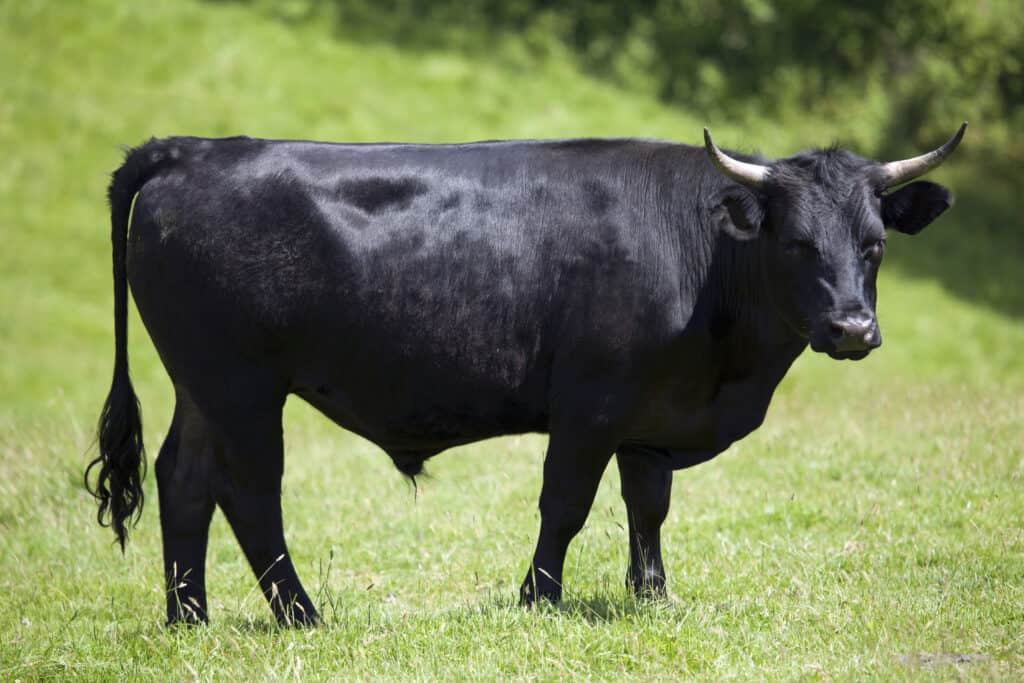
Dexters are a small breed of Irish cattle.
©Ralf Gosch/Shutterstock.com
Miniature Zebu
The miniature zebu is a modern American breed. They developed from small cattle that originally came from Southern India. Specimens came to the United States from Brazil, the Dominican Republic, and Sweden to develop the breed. In 1991, a breed registry, The International Miniature Zebu Association, was formed. At that time, 23 American zoos and about 50 private owners had cattle of this type.
By 2016 the breed numbered some 6,200 animals. The Zebu matures slowly but lives a long time: 18-21 years. They are heat- and disease-resistant and even resistant to flies because of the way their skin actively twitches. They’re highly intelligent and have mellow personalities.
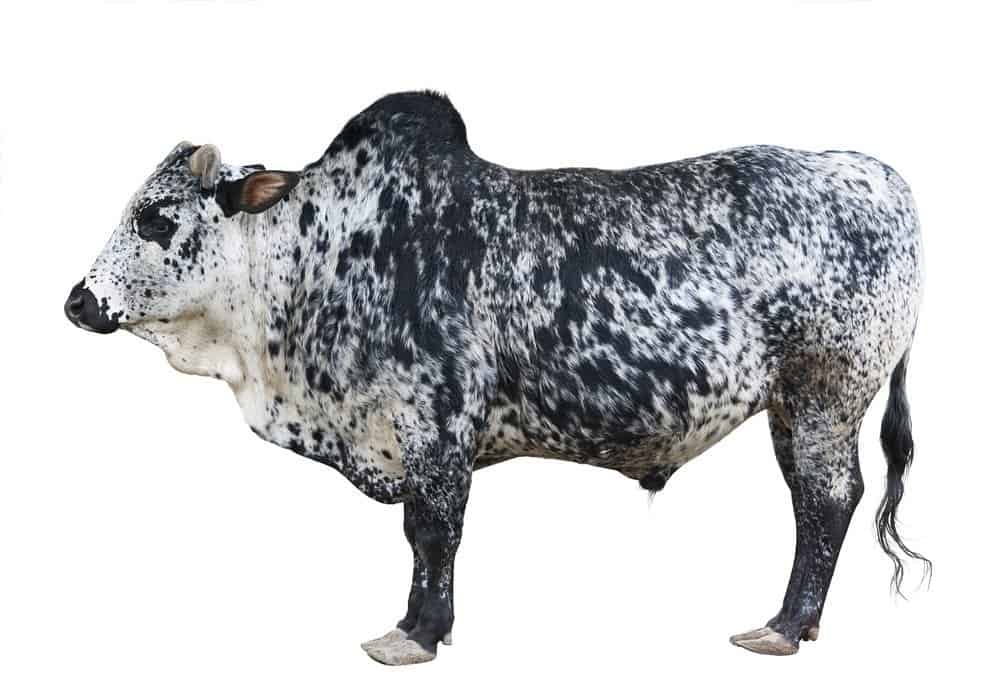
Miniature Zebu has been developed in the United States from stock originating in South India.
©Ekaterina V. Borisova/Shutterstock.com
Miniature Jersey
Standard-size Jersey cows grow up to about 62 inches and can weigh 800-1,200 pounds, but the miniature variety stands only 36-42 inches tall and reaches only 500-800 pounds. Genetically they are identical, aside from the size difference.
They are light to dark brown and sometimes have white patches. These cows have gigantic, soulful eyes. They have horns as well. They have some health problems, such as postparturient hypocalcemia (or “milk fever”), and their calves are frail. Owners must keep them warm in cold weather.
These problems notwithstanding, they are reputed to be gentle, calm, and docile. They also produce a high percentage of protein and butterfat. Miniature Jerseys are popular with people trying to produce their own food and build a self-sufficient lifestyle.
If that sounds like you, be prepared to pay between $1,800 and $3,500 to a breeder, and make sure you have at least two to five acres of grazing land to sustain each cow (unless you plan to sustain them with cattle feed).
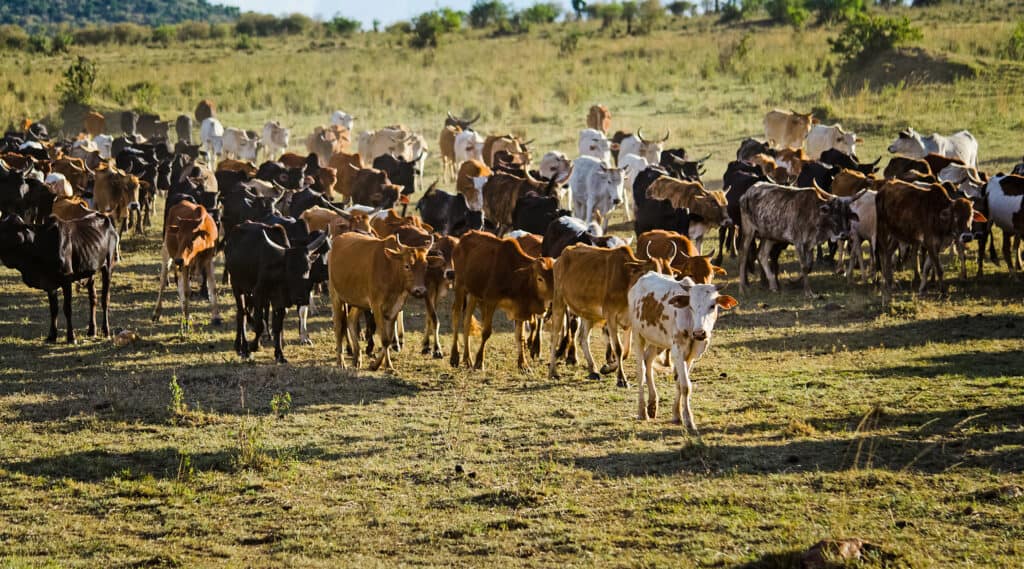
Jersey cattle come in standard and miniature sizes.
©iStock.com/avstraliavasin
6 Basic Cow-Care Tips
If you’ve never had a cow before and are considering one, either as a pet or to provide a sustainable food source for your family, here are a few of the most basic care tips to consider:
- Food and water: Cows eat hay, grass, and grain. The exact amount and kinds depend on factors like age, weight, and overall health. They need a reliable supply of clean water.
- Housing: Cows need ventilated shelter from the weather. Be sure to clean it out frequently so manure doesn’t build up and become not only unpleasant but unhealthy.
- Exercise: Cows need an enclosed pasture or yard to move around in to keep them healthy and their muscles toned.
- Grooming: Brushing your cow will remove dirt and loose hair and distribute oils evenly through their coats. This will help prevent dry skin issues.
- Veterinary care: Professionals should vaccinate and deworm cows, and provide regular checks.
If you decide to keep a miniature cow, do your homework, and talk with people who already own them to make sure you know what you’re getting into. Maybe with any luck, you’ll raise not only a family friend and personal milk machine, but the world’s smallest cow!
The photo featured at the top of this post is © JTA1974/Shutterstock.com
Thank you for reading! Have some feedback for us? Contact the AZ Animals editorial team.




